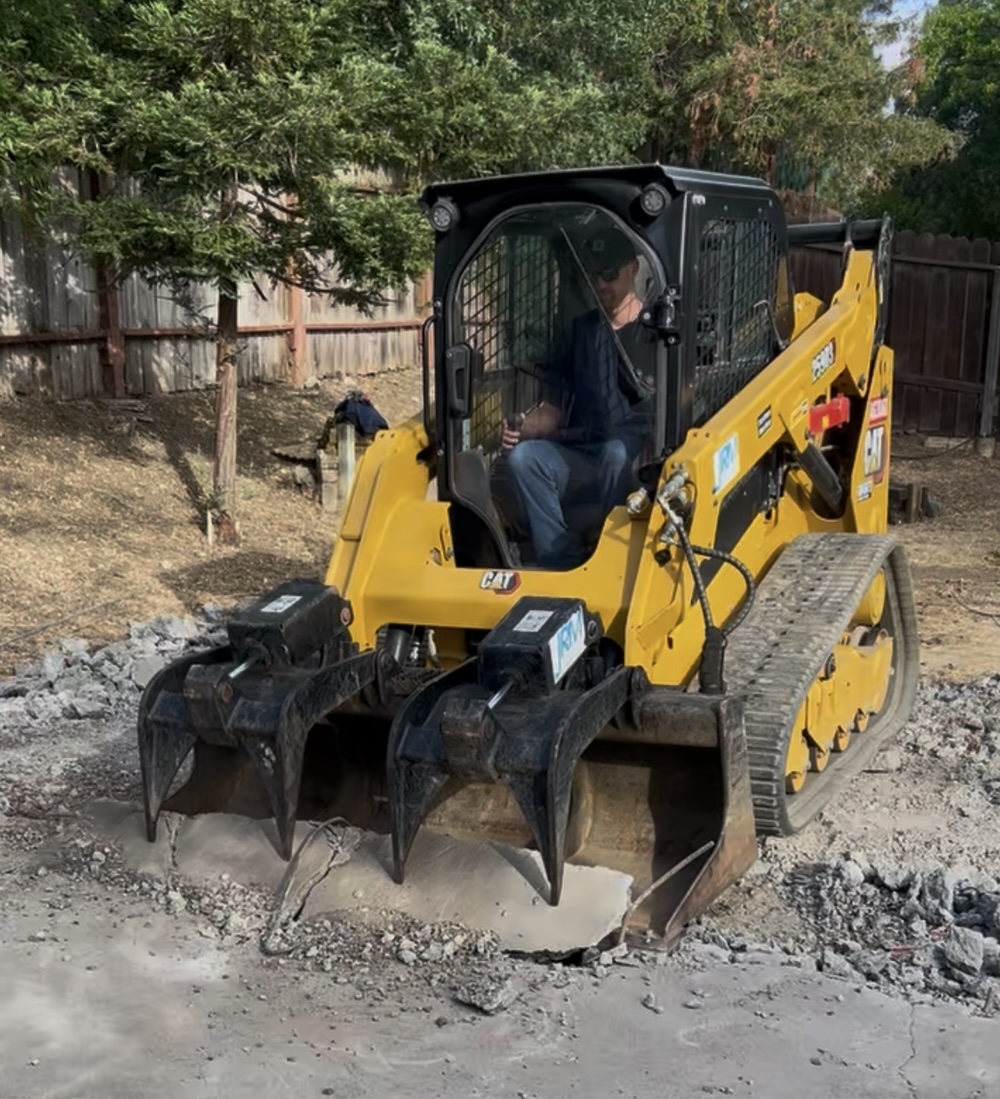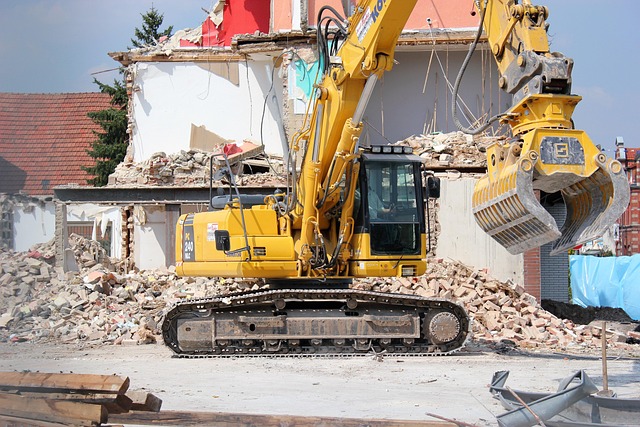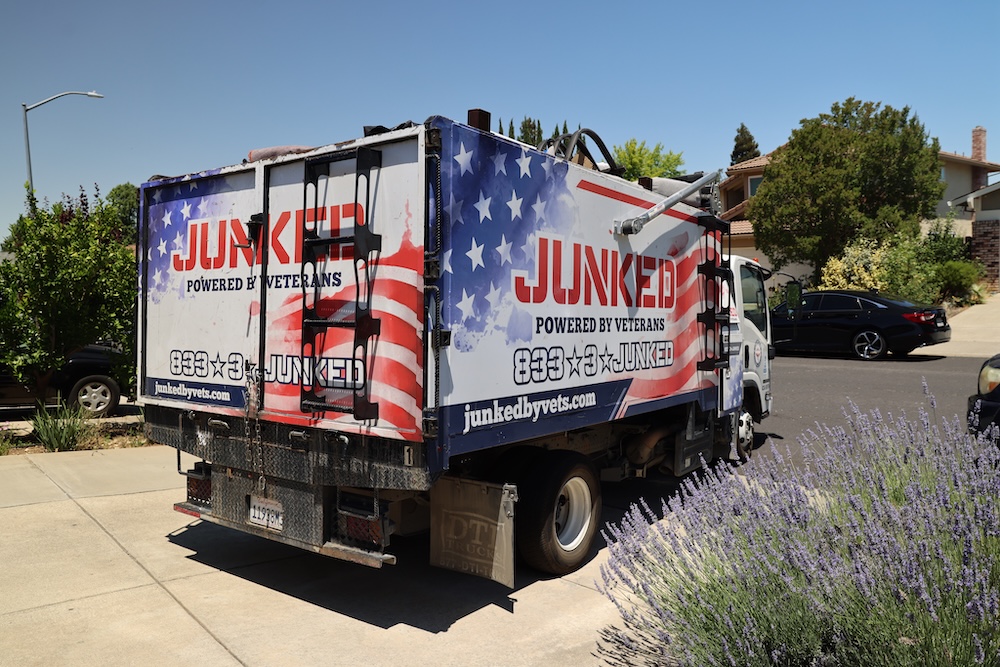Table of Contents
ToggleKey Takeaways
- Homeowners should understand that pre-construction demolition is a complex, highly planned process that goes beyond simply tearing down structures and requires strategic alignment with renovation goals.
- Determining what condition the property is in is key. This means probing the structural foundation and finding out what potential hazardous materials are present before committing to full demo or partial gutting.
- Securing proper permits, following local building codes, and implementing robust safety and waste management protocols are essential steps to ensure legal compliance and safety throughout the demolition process.
- Consulting with architects, engineers, and experienced contractors is necessary to evaluate the structural implications of demolition and to make informed decisions tailored to the specific project.
- Having a detailed, accurate budget is the best way for homeowners to prevent surprise expenses. By factoring in demolition, debris disposal, and a healthy contingency fund, they can stay within their budget throughout the renovation process.
- Intelligent, thoughtful, and carefully planned demolition can set the stage for creative new design as well as increased energy efficiency. It further improves the long-term value and sustainability of the property.
Demolition work often means handling permits, checking for hazardous materials like asbestos, and keeping to local codes. Learning how to select a certified abatement contractor and adhere to safety regulations can save significant time and money by preventing surprises and additional expenses.
As with any renovation, an equally important thing to plan for is the removal of this waste and where that debris will go. Since demolition costs vary depending on the size of the property and materials being demolished, having a clear plan allows for more accurate budgeting.
Getting an early start on inspections and discussions with specialists can help identify what lurks beneath the surface. The following section explains each step in more detail to demystify the process.
It further walks through best practices to maintain a safe project environment and stay on time and on budget.

Demolish Or Renovate: Key Questions
Before committing to a renovation, pause and consider. Get smart – Consider where your home is today and where you want to be in the coming years. Figuring out whether to demolish or remodel is the hard part. By looking at the condition, cost, and what you want to achieve, you’ll have a great base for what to do next. Here’s what you should understand.
Evaluate Your Home’s Condition
Start with a full inspection of your home. Look for cracks in walls, signs of water damage, or old wiring. Write down repairs you spot. This helps you see if small fixes or big changes are needed.
For older homes or big fixes, call a pro for an in-depth check. They can spot trouble in the frame, roof, or plumbing that’s easy to miss. Knowing the age of your roof, pipes, and wiring helps you weigh whether a repair is worth the cost.
Consider Layout And Functionality
Consider the layout and functionality of your house. Is there a sense of crowding in the kitchen? Do you need to increase storage space? As versatile as they are, many older homes have layouts that aren’t suitable for today’s living styles.
Maybe you’re planning to demolish a wall for an open floor plan or add a half-bath to accommodate guests. Write down the features or changes that are your highest priority. This running list helps maintain momentum on the project. It allows you to detect if an easy renovation will suffice or if a more substantial transformation is required.
Weigh Demolition Versus Repair Costs
Put a pencil to what all of the repairs and updates will cost. Weigh this against the cost to demolish and construct new. Even large renovations tend to go over budget if unforeseen issues arise.
Conversely, new builds have the potential to save long-term costs with superior insulation and new energy-efficient systems. Consult with local real estate agents to determine whether the improvements will increase resale value.
Align With Long-Term Goals
Consider where you want to be five or ten years down the road. Will it accommodate a growing family in the future? Does the floor plan make sense if you’re hybrid and working from home some days?
Choose designs and approaches that set the tone for the future.
Critical Demolition Steps For Homeowners
Avoiding hazardous materials, Pre-construction demolition involves more than just tearing down walls. Homeowners should have a detailed plan in place to help ensure that projects remain on time, on budget, and safe for workers and the public alike. Every step in this guide is interconnected, and following them all can help you prevent disastrous errors, delays, or litigation.
Secure Proper Permits Early
Whether for legal or illegal purposes, getting the right permits is the backbone of demolition. Homeowners should be proactive by calling up local offices, doing their homework on zoning regulations, and applying for all necessary documentation.
Not having the proper permits can result in fines, work being stopped, or even being taken to court. For instance, an applicant can deny a project if demolition occurs before it is approved. Organize your paperwork into one folder for quick access, as you might be required to show proof at any inspection request.
Test For Hazardous Materials
Testing for asbestos, lead paint, and other hazards is not just a safety measure—it’s a legal requirement. In homes built before 1980, asbestos is prevalent, and removal costs can spiral out of control.
Only certified experts should conduct testing or the subsequent cleanup. Cutting this corner endangers workers and the surrounding neighborhood and comes with serious penalties.
Plan Debris Disposal Legally
Managing waste correctly is important. Find out if there are regulations governing how you must sort, recycle, or donate salvageable materials.
Plan debris disposal legally and responsibly to reduce negative environmental impacts. For instance, reusing or recycling wood and bricks can prevent 70% of debris from going into landfills. When hiring contractors, ensure they understand and can comply with local laws, with proof of proper disposal.
Assess Structural Implications
Check how demolition affects the building’s core structure. Some walls carry loads or protect the foundation.
A structural engineer can show what is safe to remove and what needs support. Skipping this review can mean costly repairs or unsafe living spaces.
Safeguard Utilities And Site
Protect Utilities and Property. Find and disconnect all water, gas, and electric lines before demolition. Most utility companies require a minimum of 3-5 days’ notice.
Painting markings and boundaries helps to ensure a safe demolition site. Communicate with your workers. A common demolition hazard is workers being in the path of equipment or falling debris.
Vet Demolition Contractors Thoroughly
Hire contractors with no violations, appropriate insurance, and the proper licenses. Request references for similar work and compare contractors’ quotes and project plans.
Due diligence. This step serves two purposes—protecting your investment and ensuring the work is done safely and legally.
Why Smart Demolition Pays Off
For homeowners looking to renovate, smart demolition is more than just the first step. With a little advanced planning, short-term inconveniences can pay off with long-term increases in value and ease of use. Homeowners, too, consider the actual value of an old building compared to the potential of a renovated space.
Like them, smart demolitions invest in their property’s future! Smart demolition makes for less complicated and easier renovation work, saving money on repair and reducing the need for repeated patchwork improvements over time. This strategy further results in cleaner job sites and safer projects, particularly when addressing legacy or hazardous buildings.
Achieve A True Fresh Start
Though complete demolition does present a clean slate, smart demolition allows homeowners to escape the confines of old floor plans. This freedom means big things for making bold design choices and maximizing impactful upgrades!
When it comes to fitting their new spaces to today’s needs, nothing is stopping them! This extends to open plans and increased natural light. That kind of fresh start can be a psychological boon, making residents feel more at home and invigorated with their surroundings.
Enhance Energy Efficiency Potential
Most old buildings are examples of how not to save energy. It’s an opportunity to create a more energy-efficient building by adding new insulation, higher-performing windows, and more efficient heating and cooling systems.
These improvements not only lower utility bills, but they also help create a healthier and more comfortable everyday living environment. Incorporating current, sustainable building practices and materials further promotes a sustainable lifestyle and can reduce the home’s footprint on the Earth.
Improve Future Property Value
Smart demolition can improve future property value. Modern homes, equipped with the latest bells and whistles and open floor plan layouts, are much more attractive to potential buyers.
By having owners’ rebuilds reflect the positive trends in a local area, owners are increasing their potential resale value and aligning with market demand. In neighborhoods experiencing a wave of new investment, a complete teardown and rebuild can sometimes be the most prudent course.

Demolition Safety And Regulations
Prior to starting any renovation work, it’s important for homeowners to understand the safety requirements and the legal regulations regarding demolition. Construction sites are often dangerous, with hazards including falling debris, exposure to mysterious toxins like asbestos, and unstable infrastructure. Sticking to stringent safety regulations isn’t just about keeping workers safe—it helps prevent expensive legal repercussions.
Many local laws mandate a ten-day advance notice before work can begin. Pre-demolition inspections have become a rule of thumb to identify hazards such as asbestos or unsafe structures.
Know Local Building Codes
Homeowners need to familiarize themselves with local building codes first, as these regulations dictate exactly how each demolition needs to go. Local codes may set restrictions on the means and methods of building demolition. They can stop the project in its tracks if historical statutes are triggered.
One instance is that in many urban areas, structures over a certain age or those located in historic districts require additional inspections before demolition can occur. Failure to comply with these requirements can result in costly fines or work stoppages. So it pays to double-check everything before you get going!
Implement Essential Safety Measures
Safety on site should be the top priority. A demolition site should have non-negotiable safety measures—visible barricades, warning signs, and first aid stations should always be present. Workers are required to don appropriate protective equipment, including hard hats and respirators.
They must be provided with frequent safety briefings to keep them informed of evolving hazards. Open flames should be kept 300 feet from explosives. Furthermore, detonators can be triggered accidentally by stray radio signals, so it’s important to use technology with care.
When tackling complicated jobs, such as those with prestressed concrete, an experienced engineer’s guidance is essential.
Manage Waste Responsibly
A comprehensive solid waste plan helps prevent them and ensures that activities are safe and legal. Homeowners must monitor what materials come and go from the work site. They must partner with contractors that recycle or dispose of such waste responsibly.
This not only reduces landfill usage but also prevents the site from becoming cluttered and violating local environmental regulations.
Budgeting For Demolition Success
Creating a realistic demolition budget sets the stage for an uncomplicated rehabilitation. Direct and indirect costs of demolition can extend well past the bid price received from a contractor. They reach into fees, permits, and occasionally, no one sees danger.
For older homes, you have the concern of properly demolishing materials such as lead paint or asbestos. These introduce additional steps and expenses. Having a comprehensive approach during this initial phase ensures the project stays on schedule and avoids unexpected issues.
Estimate Demolition Costs Realistically
Either way, begin the process by reaching out to several qualified contractors for bids. Check how much they break down costs for things like labor, tools, and waste disposal. The larger and more complicated a home is, the more it costs.
Forty thousand square feet or 36-inch-thick walls require more time and man-hours. Homes constructed before 1978 likely have lead paint, and homes built as late as the mid-1980s can have asbestos. Both require unique treatment and drive costs up.
Make sure to request clear estimates before proceeding. This is what helps you catch any additional fees and helps you plan for any potential overruns.
Uncover Potential Hidden Fees
Have a team meeting to discuss every potential fee. Permits, debris removal, waste recycling—you’ll find these lurking in the fine print. Consider every contract closely.
Watch out for any additional costs that may arise, such as higher fees for disposal of hazardous materials or for precautions to protect the community. Clear communication with your crew equals fewer unexpected developments.
Integrate Demolition Into Renovation Budget
Don’t treat demolition as a separate process. Budget a little extra to account for surprises, such as damage discovered behind walls. Monitor your budget regularly as the project progresses.
Remain adaptable, as there may be unexpected shifts in the agenda. Plan for safe waste removal and recycling. It’s good for the earth, and it’s good for your purse strings too!
Conclusion
When starting a home renovation, accurate information and sound advice help people get started in the right direction. Conclusion: One would think that demolition is a minor detail that only affects the first stage of the entire build. When homeowners are better informed about the regs and budget accordingly, everyone wins. Homeowners can’t afford to put their faith in the luck of the draw on pre-construction demolition. Having an experienced eye early on avoids delays and costs down the line. For instance, making a phone call about code inspections to the local building office can prevent costly penalties down the line. Doing a last-minute check for old pipes or wiring before the demolition crew gets to work can protect everyone involved. Small changes like these make a big difference in keeping a project on track. To avoid getting blindsided, consult specialists, demand detailed estimates, and educate yourself. For more invaluable tips and real-world answers, read the rest of the blog and join the conversation.
Frequently Asked Questions
1. What Is Pre-Construction Demolition?
What is pre-construction demolition, anyway? Pre-construction demolition is the practice of removing buildings or portions of a building before renovation begins. It does more than just make way for new construction.
2. How Do I Decide Between Demolishing And Renovating?
Take into account the building’s condition, goals for renovation, cost, and potential safety hazards. Work with experienced professionals to determine whether complete demolition or strategic removal is the most effective solution for your needs and resources.
3. What Are The Most Important Demolition Steps For Homeowners?
What are the most important demolition steps for homeowners? Be sure to comply with all municipal ordinances and safety measures at every step of the process.
4. Why Is Professional Demolition Important?
Professional demolition helps minimize hazards, protects the value of your property, and ensures the safe removal of hazardous materials. Beyond that, though, it saves time and money by preventing major mistakes and regulatory trouble once your renovation is underway.
5. What Safety Measures Should I Follow During Demolition?
Follow proper safety precautions, including wearing appropriate protective clothing, limiting access to the demolition site, and removing dangerous substances, such as asbestos. Additionally, make sure to adhere to local regulations and consult professionals for more complicated tasks.
6. How Do I Budget For Demolition Work?
Don’t forget to budget for permits, labor, and equipment to remove waste and deal with surprises. Ask for thorough estimates from licensed contractors to prevent unexpected costs or changes during the course of your project.
7. Are There Regulations I Must Follow For Pre-Construction Demolition?
Yes, everywhere you go, you need permits and inspections, and you need to dispose of your waste safely. Review local laws and environmental regulations to make sure you stay in compliance during every stage of the demolition process.
Prepare For Progress: Veteran-Powered Pre-Construction Demolition Services
Is an outdated structure or unsafe building standing in the way of your new construction project? At Junked: Powered by Veterans™, we specialize in pre-construction demolition that clears the path for development and revitalization. Serving the Bay Area, our team of experienced veterans delivers safe, efficient, and professional demolition services tailored for property managers, developers, real estate professionals, business owners, and contractors.
Whether you’re planning a commercial build, residential development, or a complete site overhaul, our pre-construction demolition solutions are designed to help you break ground without delay. From full structural takedowns to selective interior demolition, we’re equipped to handle projects of any size with unmatched precision and care.
Why Choose Junked: Powered By Veterans™ For Pre-Construction Demolition?
✔ Pre-Construction Focus – We specialize in prepping sites for construction with efficient, compliant demolition.
✔ Veteran-Led Expertise – Our professional team brings military-grade discipline, integrity, and attention to detail.
✔ Full-Service Debris Removal – We don’t just demolish—we clear and clean the site to keep your project timeline on track.
✔ Eco-Conscious Practices – We reduce landfill waste by salvaging and recycling materials wherever possible.
✔ Compliance & Permitting Assistance – We help navigate the red tape so you can focus on your build.
Don’t let an old foundation slow down your new vision. Whether it’s removing outdated structures, hazardous elements, or preparing land for a new build, Junked: Powered by Veterans™ ensures your site is ready for what’s next.
Schedule your free, no-obligation estimate today and see how our veteran-powered demolition team can help you take the first step toward building something great. Start your construction project the right way—with clean, safe, and reliable pre-construction demolition.
Disclaimer
The materials available on this website are for informational and entertainment purposes only and not to provide legal or professional advice. You should contact your attorney or home improvement specialist for advice concerning any particular issue or problem. You should not act or refrain from acting based on any content included in this site without seeking legal or other professional advice. The information presented on this website may not reflect the most current home improvement developments. No action should be taken based on the information on this website. We disclaim all liability concerning actions taken or not taken based on any or all of the contents of this site to the fullest extent permitted by law.





